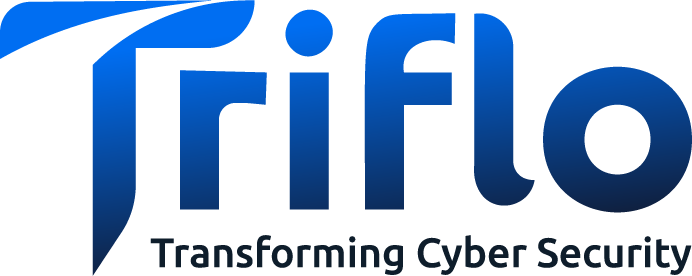Introduction
Cyber-attacks are becoming increasingly sophisticated, evolving day by day. With the rise of Artificial Intelligence (AI), attackers are reaching new levels of complexity in targeting an organization’s IT ecosystem. Additionally, regulatory mandates & global compliance standards, such as ISO 27001:2022, have made the Security Operations Centre (SOC) a critical function for ensuring cybersecurity.
SOC is a critical monitoring function that provides organizations with visibility into suspected cyber-attacks & potential gaps in information security compliance. Its main objective is to monitor the IT ecosystem in near real-time to detect suspected cyber intrusion attempts at an early stage and reduce the overall potential business impact.
Evolution of SOC
The concept of the SOC was introduced in the early 1990s and has been evolving ever since. The first-generation SOC saw significant improvements with the introduction of Security Incident and Event Management (SIEM) platforms in the 2000s, enabling automated detection of cyber threats, thus marking the era of second-generation SOCs.
With the rise of Advanced Persistent Threats (APTs), the need for a more proactive approach led to the development of the next-generation SOC framework, incorporating advanced Threat Hunting. SOC tooling evolved to include Security Orchestration, Automation, and Response (SOAR), enhanced by Machine Learning and AI to support proactive threat detection.
This blog post offers a comprehensive walk-through of the evolution of the SOC, covering fundamental concepts, key tools and technologies, and answers to frequently asked questions about SOC functions. It is particularly valuable for organizations seeking to validate their cybersecurity monitoring efforts and for aspiring professionals looking to explore this domain.
The First-generation SOC:
The first-generation of SOC introduced the concept of cyber security monitoring by collecting logs from multiple IT assets and manually analysing them to detect anomalies and suspicious activities. Following functions were performed:
- Incident detection & response: Identifies and responds to security incidents by manually co-relating events from log records & initiating steps to respond to cyber threats using conventional cyber security methods such as manually isolating the endpoint.
- Threat analysis & investigation: Deep dive into incidents to understand the nature of threats.
- Reporting & Compliance: Ensures that the organization meets its regulatory requirements by generating necessary security reports.
Since the first-generation SOC focused on manual monitoring of events, it had multiple drawbacks:
- The manual method was error prone and fully dependent on resource expertise.
- Important security incidents were missed or delayed in detection due to analyst fatigue, leading to a slower response to critical threats.
- Limited visibility leading to blind spots where attackers went undetected, particularly when monitoring extended networks & distributed environments.
- First generation SOC’s were built on a reactive approach. The focus was on responding to detected incidents rather than proactively hunting for threats or predicting emerging attack patterns, making it incapable to detect sophisticated attacks such as APTs.
- Operationally overwhelming and too tedious with inefficient outcome.
Second-Generation SOC:
SIEM technology was introduced for automated detection of anomalous activities and trigger alerts for cyber security incident detection.
The SOC framework was further enhanced with three pillars of people, process and technology to provide a structured approach towards incident monitoring and response. This method provided the following benefits:
- Continuous Threat monitoring: The SIEM technology provided continuous real-time monitoring of suspicious activities with the capability of automated corelation of events of millions of log records.
- Increased Visibility: Due to the automation, more cyber security incidents were identified reducing the blind spots.
- Better efficiency: Capable of monitoring distributed environments efficiently with the help of modern cyber threat detection tools & robust processes.
The second-generation SOC improved threat detection and streamlined the incident management process. However, with the rapid evolution of the IT landscape, driven by cloud-based services and remote work, cybersecurity tools also adapted, introducing technologies like anomaly detection and machine learning.
This shift demanded faster, more advanced monitoring and response capabilities from SOCs. Reactive monitoring became insufficient to combat modern cyber threats, necessitating a paradigm shift.
Way Forward – Next-generation SOC:
The next-generation SOC refers to capabilities of pro-active monitoring of cyber threats over a distributed eco-system and implementation of an efficient response mechanism through use of automation.
The next-generation SOC is built on top of the second-generation SOC by inheriting the process & tooling and introducing the concept of Threat Monitoring for proactive hunting.
As more organizations started getting targeted by cyber-attacks, organizations needed a mechanism to proactively detect upcoming cyber threats and provide rapid response in case of a cyber intrusion. This required beforehand information on cyber security adversaries (Threat Actors), their motives (Threat Objectives) & means of attack (Threat Vectors). Thus, Threat Modelling was introduced which aids in prioritizing the applicable threats & ensures false positives are reduced.
A next-generation SOC implements the below mentioned capabilities:
- Threat Intelligence: Provides information about various cyber threats and parameters that can help in detection of a possible compromise. These parameters are referred to Indicators of Compromise (IoC) and consists of malicious file hashes, blacklisted domain names, URLs, usernames, email addresses etc. Threat Intelligence can be categorized into Strategic (Information about emerging threats and Cyber-crime organizations), Tactical (information about threat Tactics, Techniques and toolkits) and Operational (information about Indicators of Compromise).
- Threat Hunting: Proactive approach towards discovering a compromise instead of waiting for the SIEM to trigger an alert. Threat hunting works on formulating a hypothesis about a possible cyber intrusion, examining the data from log events and creating patterns to validate the hypothesis. If found true, an Incident Response process is initiated. Threat Hunting requires sophisticated data analytics tooling and expert resources to analyse and determine threats.
- SOAR: Security Orchestration and Automated Response (SOAR) technologies are used to provide efficient & effective response in case of a cyber intrusion. Due to the increase in cyber-attacks, SOC personnel need to categorize threats based on the impact it will cause on the organization. The less critical threats need to be responded automatically whereas more critical threats require rapid containment. This is possible through automated Playbooks with pre-defined actions & efficient integration with other cyber security solutions.
- AI/ML: Next-generation SOC makes use of AI/ML in the tools and technologies enabling SOC. ML models learn normal user and network behaviour, enabling them to flag unusual activities that could represent potential threats, such as insider threats, data exfiltration, or malware infections. By continuously learning from past incidents, AI/ML can reduce false positives, helping analysts focus on genuine threats. AI-powered SOAR can automate parts of the incident response process, speeding up threat containment and remediation without requiring constant human intervention. Overall, AI/ML enhances the detection accuracy of cyber security incidents and aids in targeted response against cyber intrusions.
Emergence of Managed SOC:
Managed SOC (Managed Security Operations Center) represents a paradigm shift in how organizations approach cybersecurity. It combines the expertise, technology, and operational efficiency needed to stay ahead of increasingly complex cyber threats. Managed SOC services offer next-generation SOC capabilities to organizations through 24/7 security monitoring, advanced threat detection, and incident response without requiring them to bear the high costs and complexities of running their own SOC.
As the demand for proactive and continuous threat management grows, more businesses are turning to Managed SOCs to bolster their defenses, reduce costs, and ensure comprehensive protection across their digital assets.
Setting up an in-house or captive SOC with next-generation capabilities involves numerous challenges, spanning from resource constraints to operational complexities. Few of the key challenges faced by organizations while establishing a captive SOC are mentioned below:
- High Investment: Building a next-generation SOC requires significant capital expenditure for infrastructure, tools, software, and hardware. There are also costs associated with physical security, real estate, and technology upgrades.
- Skilled Resources: There is global shortage of skilled cyber security professionals, particularly in areas such as threat hunting, incident response and forensics. Without skilled resources, the technology & tooling will not yield the desired outcome.
- Managing and Maintaining Complex Tools & Technologies: Next-generation SOC tooling such as SIEM, SOAR, endpoint detection and response (EDR), & threat intelligence platforms need to be integrated with each other. Maintaining their functionality over time can be complex & resource intensive.
- Ongoing Training and Skill Development: Cyber threats are constantly evolving, with attackers employing new tactics, techniques, and procedures (TTPs) such as zero-day exploits, ransomware-as-a-service, and fileless malware. SOC team will require to undergo continuous training and certifications to stay up to date with new technologies, tools, and threat vectors.
- Continuous Operational Maturity: Building an operationally mature SOC takes time. Organizations need to establish well-defined processes, procedures, and workflows for incident detection, response, threat hunting, and escalation. Furthermore, these need to evolve on a continuous basis to be abreast to detect and response to the changing threat landscape.
Managed SOC overcomes these challenges as they offer more focused / tailor-made or customized services based on the requirements of an organization and their security needs. Some of the benefits of Managed SOC are provided below:
Benefits of Managed SOC
- Ready to Deploy: A managed SOC has all the tools, technologies, processes, and people required for a Next-Generation SOC ready to deploy for an organization. With the integration of the log sources, the Managed SOC can quickly start with cyber security incident monitoring and response.
- Expert Resources: Managed SOC providers employ experienced cybersecurity professionals with specialized skills in threat detection, analysis, and incident response, which may be difficult or expensive to recruit in-house. They provide continuous training and skill development to the resources to ensure quality delivery & no potential gaps in service to the organization.
- Cost Efficiency: Managed SOC providers optimize on the use of technologies & resources and thus can offer the SOC services cost effectively to multiple customers.
- Proactive Intelligence: A Managed SOC provider offers services to multiple organizations and thus can leverage the learning from the cyber-attacks of one organization to proactively defend other organizations to whom they provide the services.
- Agility & Adaptability: Being their core business, Managed SOC providers strive continuously to improve on enhancing the service and keeping themselves abreast with newer approaches towards cyber security monitoring and response.
Conclusion
In today’s interconnected world, cyberattacks can happen at any time. Security Operations Centre provides round-the-clock monitoring to detect & respond to threats in real-time. This proactive defense approach prevents cybercriminals from exploiting vulnerabilities during off-hours or weekends, offering constant protection.
Whether it is cloud environments, networks, endpoints, or applications, SOC integrates multiple data sources to give comprehensive visibility into an organization’s security posture.
By rapidly identifying & isolating cyber incidents, SOC minimizes the impact of an attack. The ability to respond quickly means that data breaches, service disruptions, or financial losses can be reduced significantly. This is essential in industries like Healthcare, Finance, and critical infrastructure, where the cost of a cyberattack can be catastrophic.
SOC is the backbone of any organization’s cybersecurity defense strategy in the modern digital ecosystem. By offering continuous monitoring, proactive threat detection, quick incident response, and regulatory compliance, SOC ensures that businesses can operate safely in an increasingly digital and interconnected world. As cyber threats continue to grow in volume and complexity, the role of SOC becomes even more critical to protecting digital assets and ensuring business continuity.


